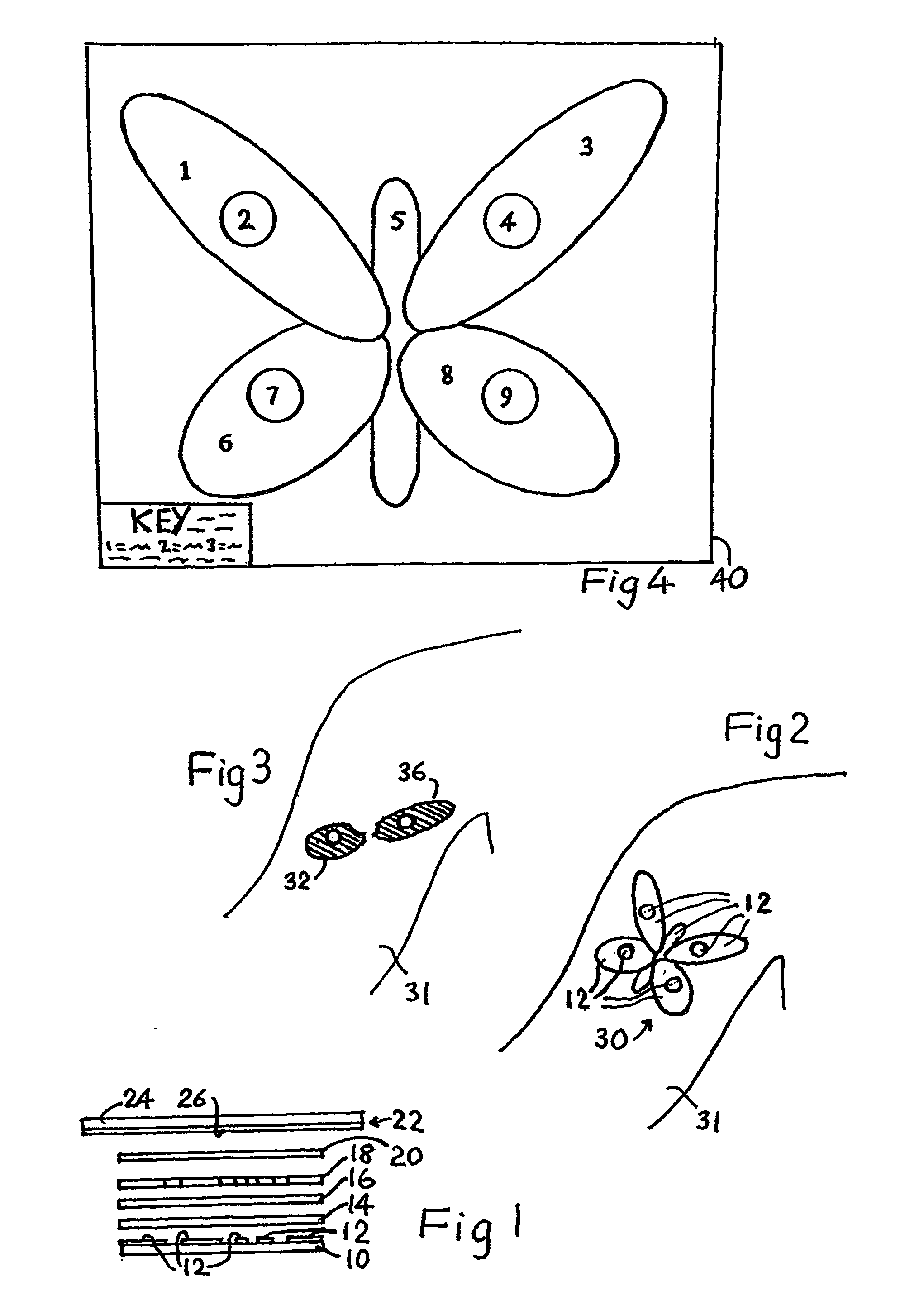Temporary tattoo for testing the sensitivity of skin to chemicals
- Summary
- Abstract
- Description
- Claims
- Application Information
AI Technical Summary
Benefits of technology
Problems solved by technology
Method used
Image
Examples
Embodiment Construction
[0024]FIG. 1 shows the various layers of material involved in the production of an embodiment of a temporary tattoo as used in the present invention. A base substrate 10 is a commercially-available water slide paper, of 176 gm−2. On its printing side, it has been printed with an image, using a plurality of coloured inks. Ink-bearing portions are indicated by 12. The printing used conventional four-colour process lithography, using inks specified for cosmetic use.
[0025] Next, a layer of lacquer 14 was applied to fuse the coloured image, and form a waterproof layer. It was applied by screen printing a solvent-based lacquer composition.
[0026] Next, a HEC cellulose barrier layer 16 was formed by screen printing. On top of this, a test layer 18 was applied, also by screen printing. This is a layer of innocuous medium, with regions in register with the printed areas 12 which contain one or more test compounds. The innocuous medium is suitably a polyvinyl pyrrolidone material. The barrie...
PUM
 Login to View More
Login to View More Abstract
Description
Claims
Application Information
 Login to View More
Login to View More - R&D
- Intellectual Property
- Life Sciences
- Materials
- Tech Scout
- Unparalleled Data Quality
- Higher Quality Content
- 60% Fewer Hallucinations
Browse by: Latest US Patents, China's latest patents, Technical Efficacy Thesaurus, Application Domain, Technology Topic, Popular Technical Reports.
© 2025 PatSnap. All rights reserved.Legal|Privacy policy|Modern Slavery Act Transparency Statement|Sitemap|About US| Contact US: help@patsnap.com

